
The opening weekend of this year’s Baltic & Estonian Music Days featured the final concert of their annual Young Composer competition, now in its tenth year. It was encouraging to witness that most rare of phenomena: the genuinely best works being the ones receiving the awards. All of the music was for some combination of flute, piano and percussion, performed in the Heino Eller Music School by Kristin Müürsepp, Jorma Toots and Gertrud Jeffrey. In the younger age group, the “Promising Future” first prize went to Gerli Ong; her piece Tuli tuld ei kustuta [Fire won’t put out fire], though structurally a little vague, was one of the most ambitious and experimental compositions in the entire concert, even more so than many of those by the older group. Lola-Mariin Kuus took the Young Composer first prize for her piece Uus ruum [New space], which came across as an interesting stream of consciousness. Georg Jakob Salumäe took a well-deserved second prize with Echo, a piece that demonstrated mature melodic writing, closely aligning flute and piano alongside increasingly antagonistic percussion. i also really enjoyed Tähtede saatmine [Sending stars] by Kadri Klanberg, who took third prize, for the way her piece established three layers, with flute at its centre, grounded by the piano while a glockenspiel embellished high above. The Special Jury Prize went to Emilie Ruus, whose Mõte olematusest [The idea of nothingness], dominated by a piccolo, imaginatively opted for what so many student composers seem to avoid at all costs: ruminative music. Hopefully some or all of these budding musical voices will be heard more prominently in years to come.
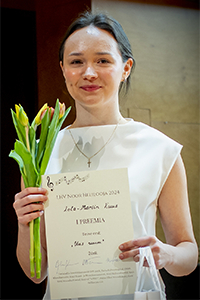
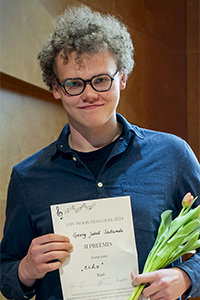
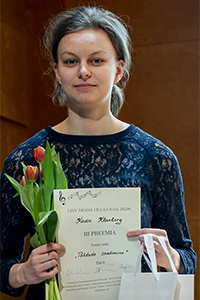
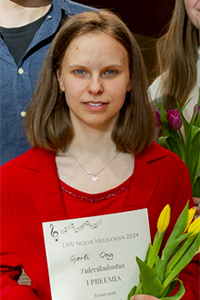

Another annual award presented at the festival was the Au-tasu prize, awarded to the best new work premièred in Estonia during the previous year. Once again common sense improbably prevailed and the jury navigated around some highly dubious works on the shortlist to announce Madli Marje Gildemann as the winner, for her ensemble work Nocturnal Migrants. Gildemann hasn’t been featured very prominently, or very often, at the Estonian Music Days, but it’s become clear in the last few years that she’s one of the most interesting and original of the country’s younger generation of composers. (It’s worth noting Gildemann herself won the young composer Special Jury Prize in 2018.) One of the other Au-tasu shortlisted works, Liisa Hirsch‘s Earth Veins, for an ensemble of Estonian bagpipes (and one of my highlights of the 2023 Estonian Music Days) was also given special recognition.
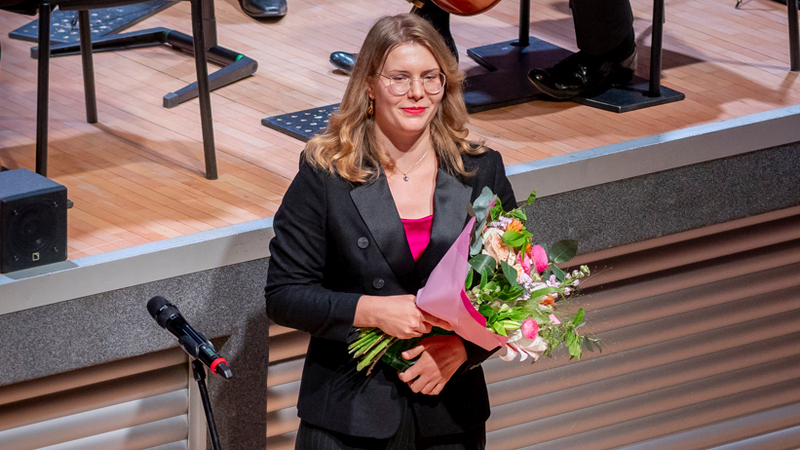
The presentation took place, as it always does, at the start of the concert given by ERSO, Estonia’s National Symphony Orchestra. Taking place in the concert hall in Tartu’s Vanemuine Theatre, and conducted by Clement Power, as soon as the orchestra began to play it became immediately obvious how different the acoustic was from their much larger usual home, Tallinn’s Estonia Concert Hall. Here the sound was constricted and compressed, leaving little room for the music to breathe or resound. This caused all kinds of havoc, particularly in the second half of the concert, featuring a trio of pieces, all of which were surprisingly similar in their brute force approach to dynamics, exacerbated by the hall. Linda Leimane‘s Enantiomorphic Chambers suffered from an overwhelming saturation of tam-tam strikes, in music that didn’t so much need to be heard as just desperately want to be. Vellum by Justina Repečkaitė was even more behaviourally limited, either growling and surly or shrill and shrieky, trying so hard to be intense that it effectively cancelled itself out. Significantly better was Marius Baranauskas‘ Supernova, where rich, radiant, shivering suspended chords ended up in a huge tutti texture that, after a while, became a bit mercilessly piercing. But where it went next was intriguing, via nebulous and squally episodes either back to where it started or to some kind of altered echo.
Overall, the first half was more rewarding, opening with …vaid üksainus sõna… […just one word…], a 1999 work by Margo Kõlar that once again demonstrated what a stylistic chameleon he is. On this occasion, he was in brash, bombastic mood, harnessing somewhat filmic tropes when opening things out into more spacious territory, and even introducing neo-Soviet touches in the percussion and brass; more telling music came in an obliquely lyrical sequence around halfway through. Easily one of the most wildly capricious things i heard during my time in Tartu. The new cello concerto from Age Veeroos, Harpyia, featuring soloist Valle-Rasmus Roots, was as engaging as it was because of various uncertainties built into the nature of the work. The character of the cello was ambiguous, seemingly at odds with the orchestra earlier on, with the issues in their disjunct relationship not so much resolved as pushed through. This is entirely in keeping with the elusive approach Veeroos takes in her music, which was made all the more fascinating here due to the work’s combination of spontaneity and extremity, with bursts of large-scale bristling energy and huge turbulence.
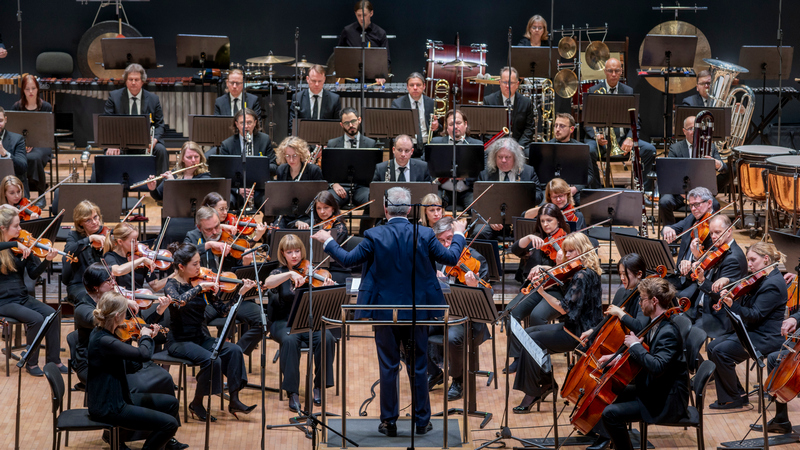
The most compelling work on the programme came from Liisa Hõbepappel – another of Estonia’s exciting younger composers – whose new piece Ja nüüd on ikka veel nüüd [And now it is still now] took its starting point from some striking lines of poetry by Bernard Noël. Its enticingly strange musical language, alien yet lyrical, suggested not so much a bizarre form of song trying to sound as something like a halting, accumulating cry, driven on by detuned harp, smeary string assertions and, later, a busy piano. Though never clearly so, the music nonetheless felt fundamentally melodic (more by implication than anything more concrete), only to collapse in falling cascades everywhere. Its conclusion was highly enigmatic, receding to delicate chamber proportions, in the process sounding more and more exposed. Noël’s beautiful text is both descriptive and questioning, trying to make sense of perceptions, and Ja nüüd on ikka veel nüüd was an excellent parallel of these poetic uncertainties. It was a composition i wanted to listen to again as soon as it ended, not to find answers for the questions it posed but just to keep revelling in those beguiling questions.
Taking first prize for the most startling venue used at this year’s festival was Tartu University’s Museum of Natural History, where the members of Ensemble U: performed – and we all stood – in the midst of a vast menagerie of live and preserved animals. The three pieces that made the strongest impression did this by (unintentionally) playing into the connotations of the natural world surrounding us on all sides. Justina Repečkaitė‘s Incantare, being premièred in a new version devised by flautist Tarmo Johannes for bass flute and electronics, spoke like a primordial voice, expanding into a carefully executed ritualistic act, the precision of which (Johannes is an astonishingly precise performer) was periodically broken up by wildness. At times, the live and electronic sounds sounded as twin strands of this same act, with the electronics often coming across like a more literal vocal mouthpiece to the more abstract and stylised material emanating from the flute. Liina Sumera‘s new work for cello and electronics, Pororoca, took its name from an Amazonian tidal bore, and it was impossible not to hear this in the music, though as if perceiving the wave from various vantage points, with different forms of momentum and quantities of detail. Some were unstable, violent and churning, others suggested depth, as if we were physically within the wave, while still others had a smooth attitude and contour, all mirrored in a language teetering constantly between pitched and percussive sounds, with some beautifully crunchy noise swells.
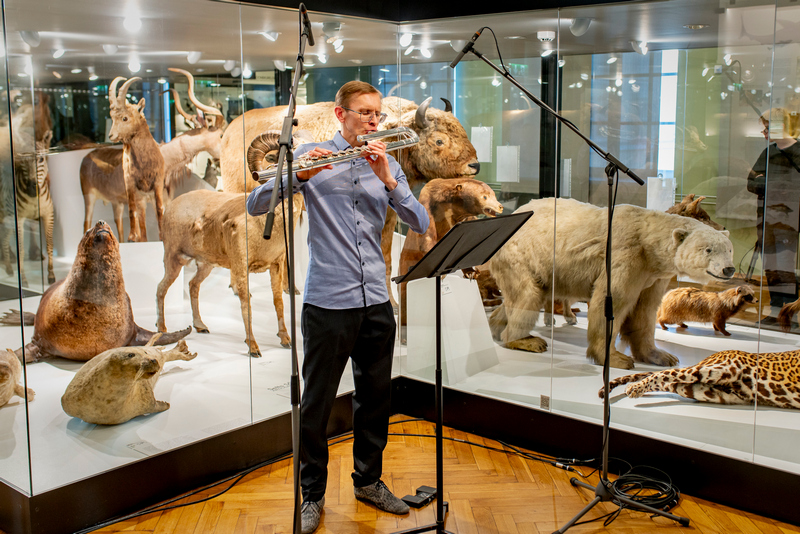
Marianna Liik‘s Maaalune [Underground] achieved a marvellous level of immersion, with players dispersed around the museum space combined with electronics to create an all-enclosing sonic environment. In terms of both spacialisation and the acoustic / electronic divide, it was fascinating to hear how connections suggested (and sometimes negated) themselves. Some relationships were unequivocal, such as when sustained music materialised in the flute, clarinet and violin, forming a stark contrast to the violent instability around them. However, as the piece progressed i couldn’t shake the feeling that, beneath all of these possible notions of connection was something deeper, in which everything was ultimately rooted. The effect this had on the sonic totality was surprisingly profound.
These performances are all available to stream (for free) either as audio via Klassikaraadio and/or as video via the festival’s EMP TV service. Links below:
Young Composers: audio
Estonian National Symphony Orchestra: audio / video
Ensemble U: : audio / video
